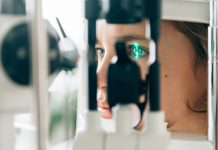The Essure implant method of female sterilisation caused at least 20,000 documented painful experiences, but how did the situation get so far?
In the summer of 2018, pharmaceutical giant Bayer announced that Essure, a non-surgical, implantation method of sterilisation for women, would not be sold after December 2018. As of July, there have been over 20,000 documented adverse events related to the medical device and over 18,000 lawsuits have been filed against its manufacturer for damages for medical care and related expenses as a result of severe complications following implantation of the device.
With all of the negative events that lead to the discontinuation of sales, it may be surprising to find out the company made this voluntary decision as a result of declining sales by 70% and other business reasons, not due to the benefit-risk profile of the device- which they claim they stand by.
In New York State over an 8 year period, 25-30% of women that decided on a permanent birth control procedure, chose an implantation method, such as Essure. It was estimated that nearly 10,000 patients that had the device implanted required reoperations over a five-year span to either remove the device or for other complications brought on by Essure. This is a tenfold higher risk of additional surgeries compared to laparoscopic sterilisations, or tubal ligations.
Since the approval of the device in 2002, thousands of women have reported adverse effects from the device. Essure, which consists of metal coils that are inserted into a woman’s fallopian tubes, is supposed to become over 99% effective after a three-month waiting period post-implantation. During this time, scar tissue is expected to form around the device and prevent sperm from reaching an egg, thereby preventing contraception.
This procedure was done in-office, non-surgically, and with the expectation that women return to normal activities the same day, as recovery time was minimal. Essure was a permanent method of birth control that was recommended to women who no longer wanted to become pregnant.
With the expectation of a 99.3% effective rate and this device being the only FDA approved implantation method of sterilisation, it may be alarming to see that researchers estimate that nearly 10% of women could get pregnant within 10 years of implantation, which is about four times more of a chance than traditional tubal ligation.
With many complications during trials, it calls to question how the device maintained enough credibility to stay available to women for so long. During an initial study, 75% of the 518 participants experienced some side-effects following insertion, and 25% of these women were still experiencing the same side-effects as severely as they had before, a year later. These side-effects include, but are not limited to, back pain, severe menstrual cramping, severe pelvic and abdominal pain, and pain with sex.
Another study of over 71,000 women who had the device implanted found that almost 10% of women saw sterilisation failure in a 5-year time frame. Sterilisation failure is a risk of all sterilisation procedures, but proves to be more of an issue with the Essure medical device. Many women have reported unintended pregnancies while Essure was implanted. Some of these women carried the child healthily to term, but most reported ectopic pregnancies, stillbirths, or miscarriages. Bayer claims that this could be a result of women failing to report to their 3-month check-up to make sure the device is working and inserted properly.
Women often report adverse effects of Essure immediately following the procedure. Most commonly reported are pain or discomfort, headaches, depression, fatigue, and weight fluctuation. More severe risks commonly reported are tears and perforations in the uterus and fallopian tubes, as well as the device travelling from the implantation location to the abdomen or throughout the pelvic cavity.
Thousands of women have reported adverse effects as a result of this product, and most of what we know has come from self-reporting women. Dr. Katy Moncivais, PhD, Medical Editor, states that, “So much of our Essure adverse event knowledge stems from patients self-reporting their negative experiences.” She continues on to say, “It’s entirely possible that the incidence of adverse events is much higher than it appears today.”
Affected women have even come together to form a Facebook group where women share experiences of the pain, and suffering they’ve encountered. They also discuss the legal proceedings undertaken as a result of the device, with hopes to encourage other women to speak about their experiences.
Along with this, Netflix released a documentary on the medical device industry featuring Essure called The Bleeding Edge. Around the time of the documentaries release, Bayer made their announcement about the discontinuation of Essure, while stating that they still stand by the safety and efficacy of the device and that the documentary, and other like sources of information, included “inaccurate and misleading publicity about the device.”
In 2016, the FDA stepped in to enforce label changes, include a boxed warning, and to include a patient checklist to better help patients and healthcare providers understand the risks associated with the device. They also helped create a post-market study to assist in gathering data on the risks and benefits of Essure. Recently, this study was extended from three years to five years following the discontinuation of the device in December of 2018.
In April of 2018, the FDA completely restricted sales to healthcare providers who utilize the approved patient-doctor checklist that acknowledges the understanding and acceptance of the potential risks before implantation. They also forced new labelling that included that this checklist must be reviewed by doctor and patient before the procedure took place.
The FDA will continue to review reported adverse events related to the Essure medical device, and the post-market study will continue for several years. If you or a loved one has experienced a negative effect as a result of the Essure device, contact a medical professional immediately.
Darian Carrow
Staff Writer for Consumer Safety











